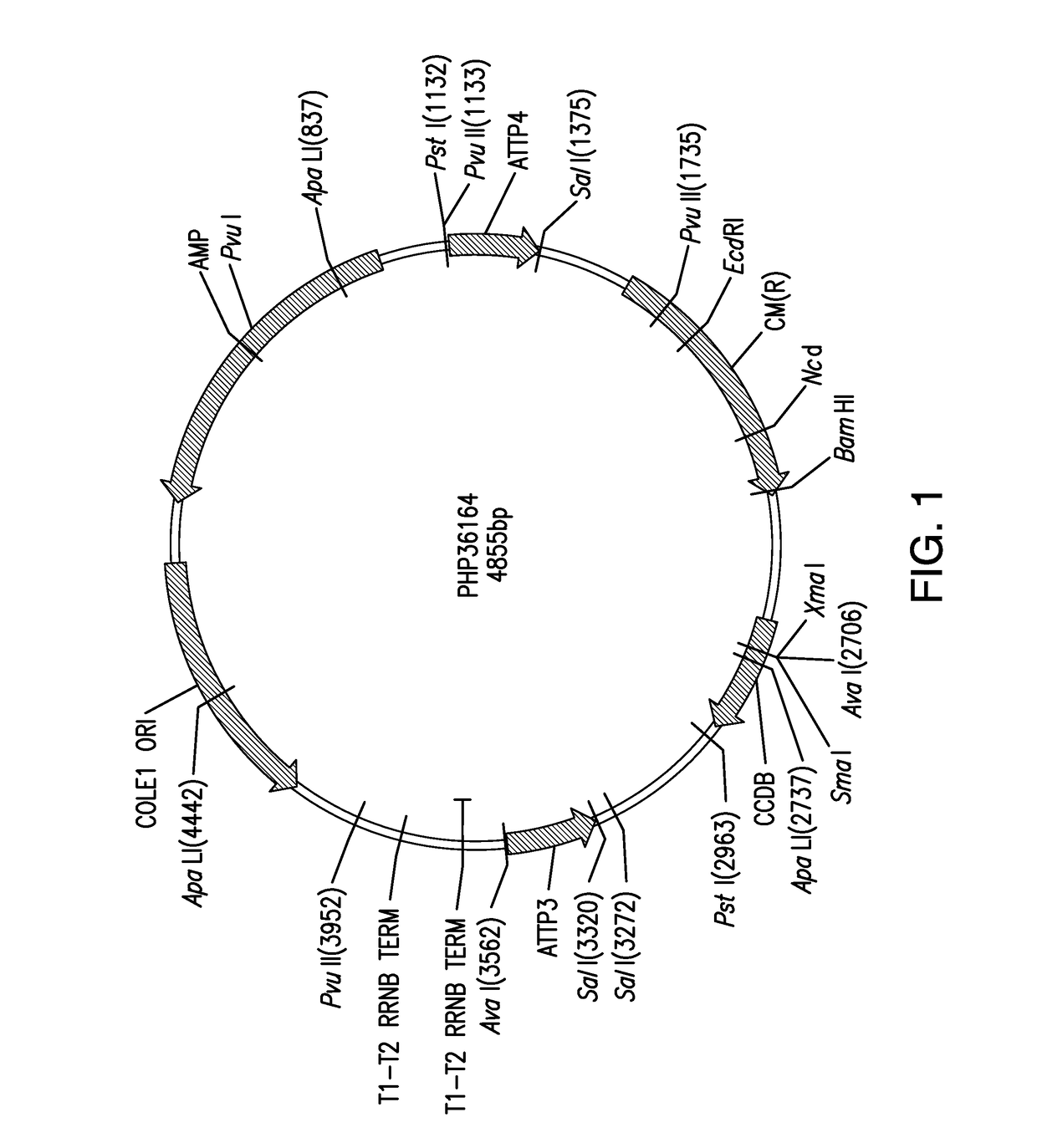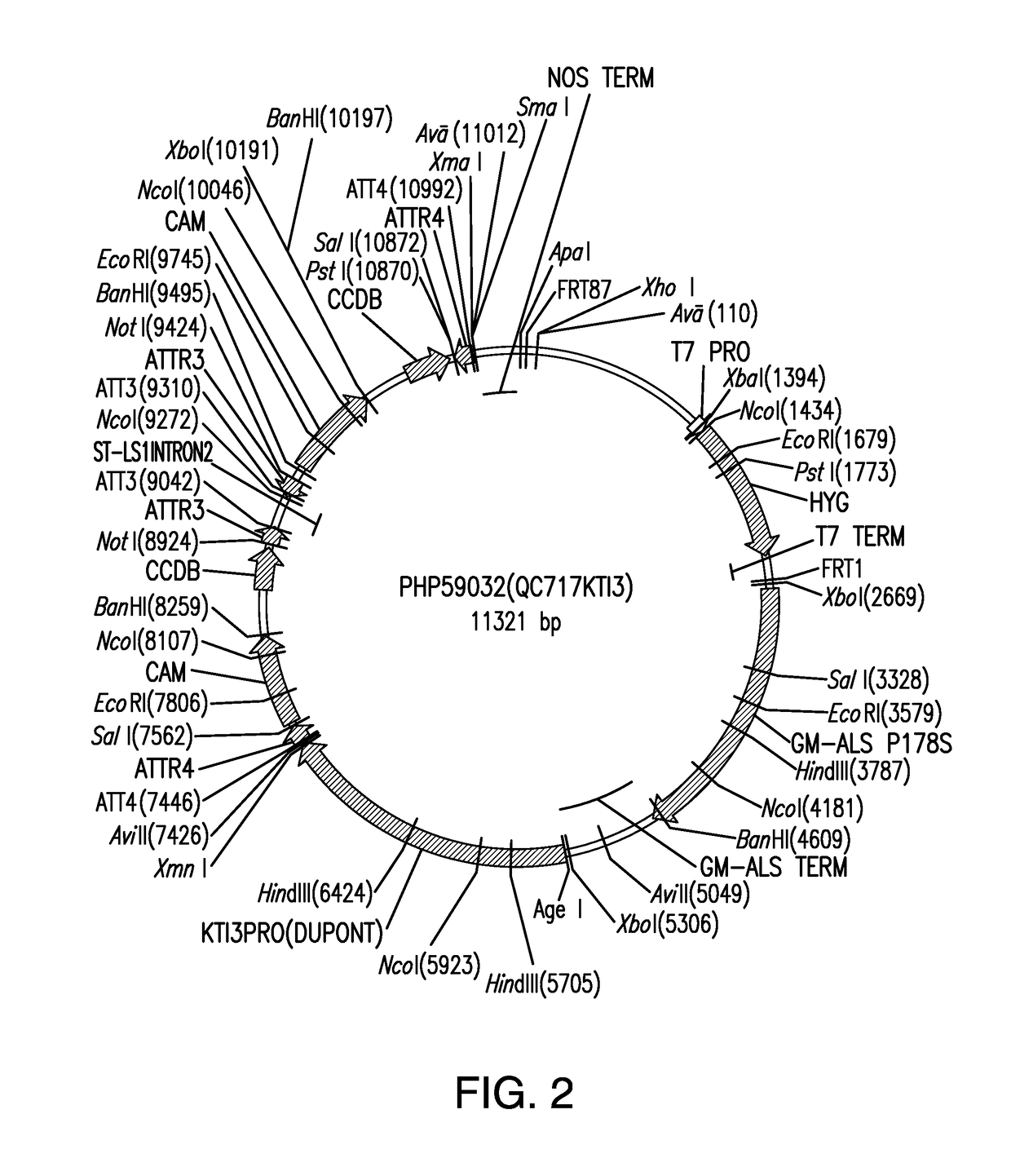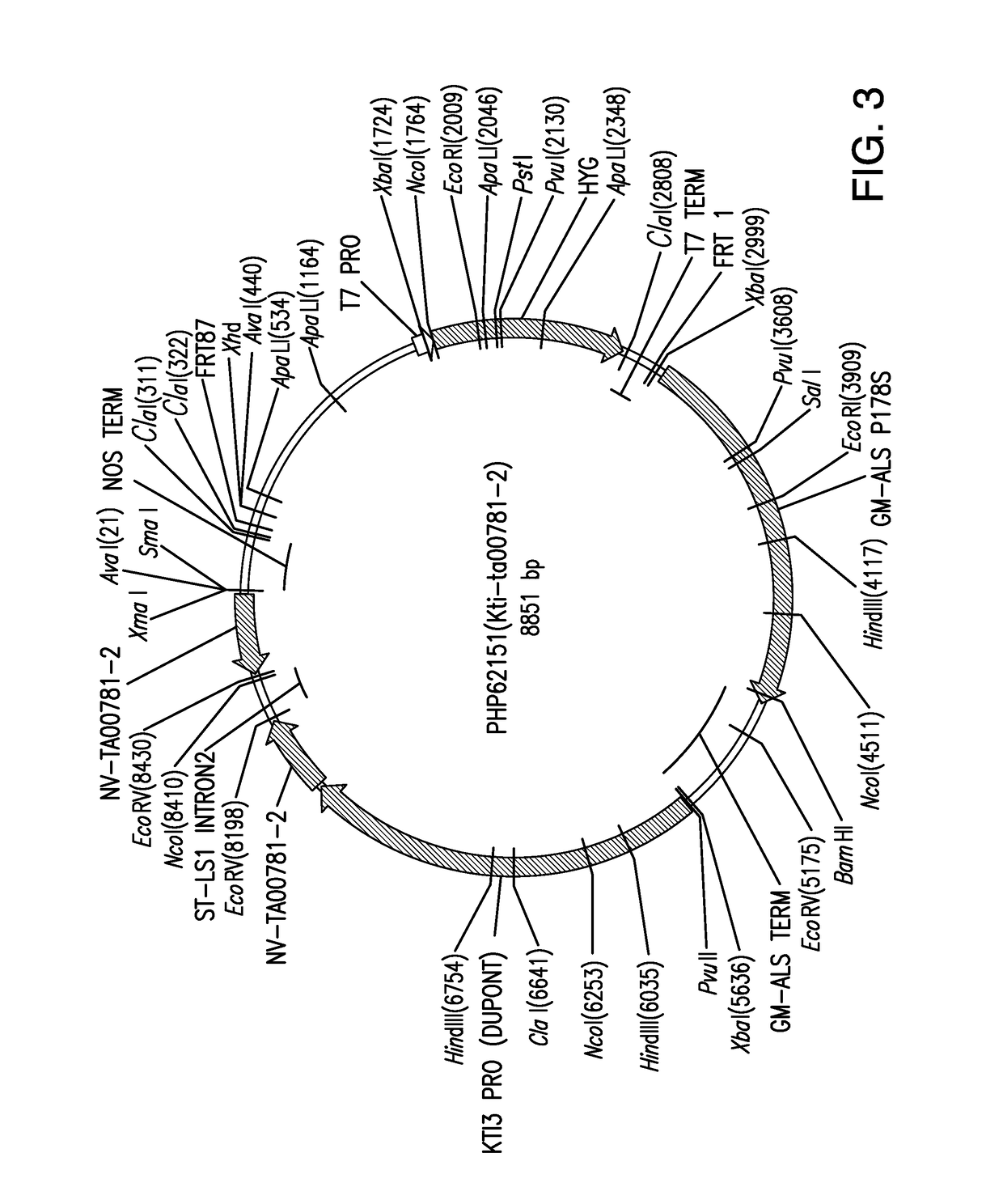Compositions and methods for insecticidal control of stinkbugs
a technology of stinkbugs and compounds, applied in the field of molecular biology and gene silencing to control pests, can solve the problems of destroying millions of acres of staple crops, $100 billion in crop damage, and serious problems of insect pests, and achieves the effects of controlling pests, and reducing the level of target sequences
- Summary
- Abstract
- Description
- Claims
- Application Information
AI Technical Summary
Benefits of technology
Problems solved by technology
Method used
Image
Examples
example 1
of DNAs
[0126]DNAs were selected by two different methods. cDNA libraries were constructed using the SMART cDNA Synthesis Kit (Clontech) from mRNA isolated from second instar southern green stinkbug (Nezara viridula (Linnaeus)) or mRNA isolated from the head of second and third instar southern green stinkbugs. Select clones were sequenced and subject to BLAST analysis to create an expressed sequence tag (EST) library. The library was BLAST queried with sequences of interest and southern green stinkbug homologs were identified.
[0127]Additionally, a transcriptome of second instar southern green stinkbug was created using Illumina sequencing. Sequences were assembled using Oases (Schulz et al. 2012) and annotated using a proprietary functional annotation pipeline. The transcriptome was BLAST queried with sequences of interest and southern green stinkbug homologs were identified. DNAs were synthesized using RT-PCR. In brief, mRNA from second instar southern green stinkbug was reverse tra...
example 2
n of Double Stranded RNA
[0128]Either EST clones or clones derived from RT-PCR and cloned into pCR2.1 were used as template for PCR. Sequences flanking the insert were fused with the T7 promoter sequence (TAATACGACTCACTATAGGG, SEQ ID 1) and used to generate primers (Table 1) to PCR amplify DNA. This PCR amplified DNA was used to synthesize double stranded RNA (dsRNA) using the MEGAscript® kit (Ambion, Catalog No. AM1334) following the manufacturer's protocol. Products of PCR as well as dsRNA synthesis were run on 1% agarose gel to verify amplification. With the EST clones, after the initial screening, fragments of the EST clones were amplified using gene specific primers fused with the T7 promoter sequence.
[0129]
TABLE 1EST PRIMERTAATACGACTCACTATAGGGATGCCCGGGAASEQ ID 21TTCGGCCATTACGEST PRIMERTAATACGACTCACTATAGGGCGCGCCAAACGSEQ ID 32AATGGTCTAGAAAGCpCR2.1TAATACGACTCACTATAGGGCTAGTAACGGCSEQ ID 4Primer 1CGCCAGTGTGCTGpCR2.1TAATACGACTCACTATAGGGGGCCGCCAGTGSEQ ID 5Primer 1TGATGGATATCTG
example 3
Clones
[0130]The following clones (Table 2) were selected for use in the bioassay.
[0131]
TABLE 2lengthCorresponding full-SEQ ID NOClone namebpDESCRIPTIONlength DNASEQ ID NOta01222.002 Fragment 1362WD domain, G-betata01222.002_nezvi21repeat proteinSEQ ID 6SEQ ID NOta01222.002 Fragment 2369WD domain, G-betata01222.002_nezvi22repeat proteinSEQ ID 6SEQ ID NOta01222.002 Fragment 3374WD domain, G-betata01222.002_nezvi23repeat proteinSEQ ID 6SEQ ID NOta02948.001 Fragment 1355Coatomer proteinta02948.001_nezvi24complex, subunit beta 1,SEQ ID 7SEQ ID NOta02948.001 Fragment 2382Coatomer proteinta02948.001_nezvi25complex, subunit beta 1,SEQ ID 7SEQ ID NOta02948.001 Fragment 3376Coatomer proteinta02948.001_nezvi26complex, subunit beta 1,SEQ ID 7SEQ ID NOta00781.001 Fragment 1340Coatomer, gammata00781.001_nezvi27subunit,SEQ ID 8SEQ ID NOta00781.001 Fragment 2383Coatomer, gammata00781.001_nezvi28subunit,SEQ ID 8SEQ ID NOta00781.001 Fragment 3388Coatomer, gammata00781.001_nezvi29subunit,SEQ ID 8SEQ I...
PUM
| Property | Measurement | Unit |
|---|---|---|
| temperature | aaaaa | aaaaa |
| time | aaaaa | aaaaa |
| rupture pressure | aaaaa | aaaaa |
Abstract
Description
Claims
Application Information
 Login to View More
Login to View More - R&D
- Intellectual Property
- Life Sciences
- Materials
- Tech Scout
- Unparalleled Data Quality
- Higher Quality Content
- 60% Fewer Hallucinations
Browse by: Latest US Patents, China's latest patents, Technical Efficacy Thesaurus, Application Domain, Technology Topic, Popular Technical Reports.
© 2025 PatSnap. All rights reserved.Legal|Privacy policy|Modern Slavery Act Transparency Statement|Sitemap|About US| Contact US: help@patsnap.com



